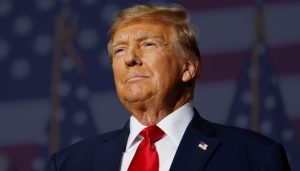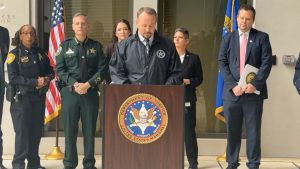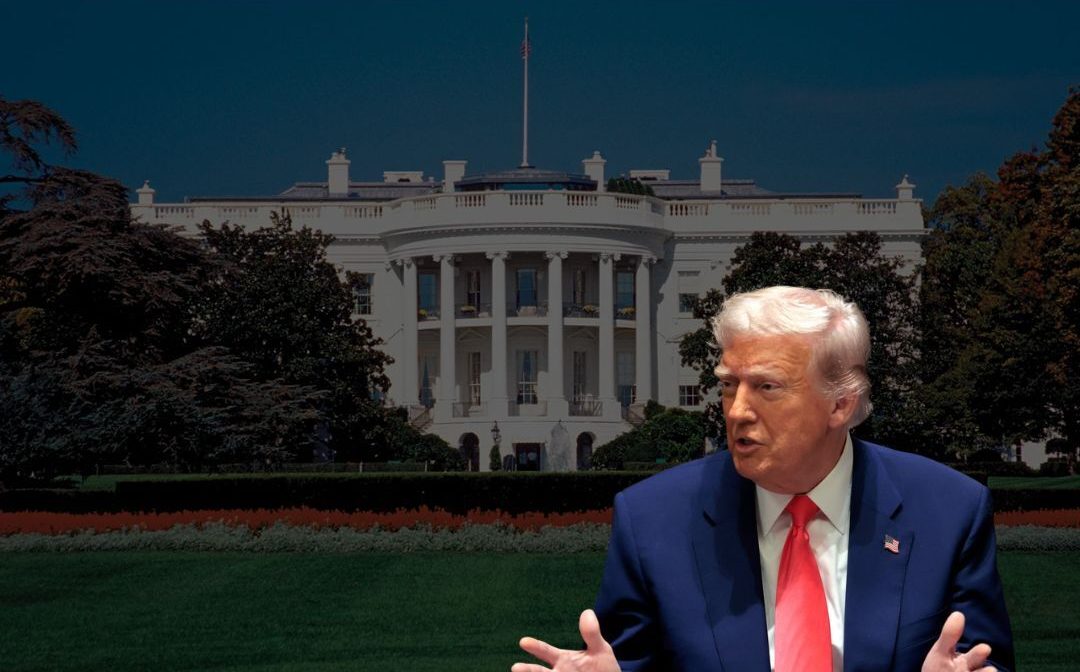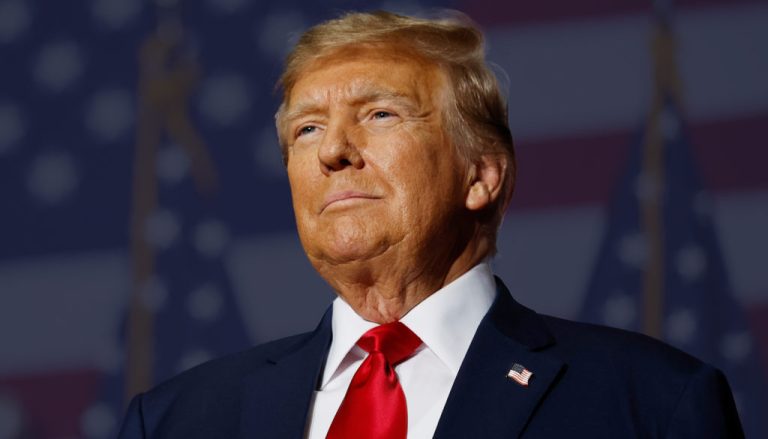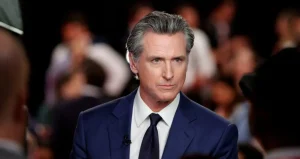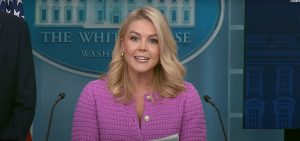Trump’s Crime Policy Turns Into Unexpected Political Showdown
For decades, crime and safety have been cornerstones of American political debate. But today, the fight is playing out in new ways, with a surprising twist that few could have predicted. At the center of it all is President Donald Trump, his Vice President JD Vance, and a controversial deployment of federal resources that has reshaped the conversation in Washington, D.C. and beyond.
A Shift in the Crime Debate
At a recent event in La Crosse, Wisconsin, Vance outlined what he believes to be one of the most telling political shifts of the Trump era. He pointed to Democratic leaders who, in his view, have found themselves defending policies that fail to address violent crime, while at the same time criticizing the administration’s attempts to intervene.
“It doesn’t make an ounce of sense,” Vance told the crowd. “Why is it that you have mayors and governors who are angrier about Donald Trump offering to help them than they are about the fact that their own residents are being carjacked and murdered in the streets?”
The remark touched a nerve because it echoes frustrations felt in many communities. Cities such as Milwaukee and Chicago have struggled with ongoing violence for years. For residents, the debate is not abstract — it is about safety in their neighborhoods and the ability to live without fear of armed robberies or assaults.
Trump’s Surprising Move
The latest controversy stems from Trump’s decision to send federal officers and National Guard units into Washington, D.C. to assist the Metropolitan Police Department. The surge, which began earlier this summer, was part of a broader initiative to reduce violent crime in major urban centers.
Administration officials insist the results speak for themselves. Within two weeks of the deployment, measurable declines in violent incidents were reported in the nation’s capital. Carjackings, homicides, and armed robberies — crimes that had been spiking in previous months — dropped sharply.
Vance emphasized those outcomes while noting the irony of the political fallout. “Donald Trump reduced murders and carjackings in 14 days in Washington, DC,” he said. “And yet you have national Democrats saying they oppose what he’s doing. It’s like they’re defending crime itself.”
How Trump Framed It
According to Vance, Trump himself brought up the issue during a private lunch. The President, half-joking but serious in tone, told his Vice President: “JD, I don’t know how I did it. Somehow I’ve gotten Democrats to come out in defense of crime. If I came out tomorrow and said I liked puppies, they would say puppies are terrible.”
The remark drew laughs at the Wisconsin event but underscored a deeper theme in Trump’s political playbook: forcing opponents into positions that appear out of step with ordinary voters.
Reaction From Local Leaders
Not every Democrat has opposed the federal involvement. In fact, Washington, D.C. Mayor Muriel Bowser gave rare public praise to the Trump administration this week. She acknowledged that the surge of federal officers had produced significant gains for city residents.
“We greatly appreciate the surge of officers that enhance what [the Metropolitan Police Department] has been able to do in this city,” Bowser said. “The difference between this 20-day period of the federal surge and last year represents an 87% reduction in carjackings in Washington, DC.”
Her acknowledgment placed her at odds with several national Democratic figures who continue to resist Trump’s law-and-order framing. But it also reinforced what the White House intends to highlight: that results, not politics, should guide crime policy.
Broader Implications for the Country
The administration’s allies argue that Washington is just the beginning. If violent crime in the capital can be reduced so dramatically with a limited surge, they believe similar strategies could work in cities across the nation.
Vance suggested that what is happening in D.C. could serve as a model. “Wouldn’t it be nice if Democrats just worked across the aisle for once — on something as simple as saying murders and carjackings are bad?” he asked.
The White House is expected to use Washington’s example as evidence in upcoming debates about national crime policy. By presenting tangible reductions in crime tied directly to Trump’s decisions, the administration hopes to show that federal involvement can succeed where local approaches have fallen short.
The Political Trap
Critics, however, say the move is less about public safety and more about political theater. By deploying federal forces, Trump is able to highlight crime problems in Democratic-led cities while also positioning himself as the leader who takes action when others will not.
This dynamic places Democrats in a difficult position. If they resist Trump’s strategy, they risk appearing indifferent to rising crime. If they acknowledge its success, they risk giving him political credit heading into the next election.
Vance’s framing — that Democrats are effectively “defending crime” — may oversimplify the issue, but it resonates with Trump’s base and potentially with swing voters frustrated by persistent urban violence.
A Debate That’s Not Going Away
Whether or not Trump’s surge continues in other cities, the political fallout is likely to remain. Public safety consistently ranks among the top concerns for voters, and both parties are now being forced to sharpen their messages.
For Trump and Vance, the story is straightforward: action produces results. For Democrats, the challenge is more complicated. They must balance legitimate concerns about federal overreach with the undeniable reality that many urban residents feel unsafe.
The irony, as Vance noted, is that Trump seems to have flipped the debate entirely. Instead of Republicans being accused of ignoring crime, it is Democrats who are now being cast as downplaying it.
What Comes Next
The administration has not announced whether additional cities will receive similar federal support. But insiders suggest that if the Washington experiment continues to produce strong results, it will almost certainly be used as a template elsewhere.
For now, Trump has something unexpected on his side: an opponent caught in a defensive crouch. Democrats, often eager to spotlight Republican missteps, are being forced to explain why they oppose a policy that appears to reduce violence.
That is the paradox Trump and Vance are eager to emphasize — and one that may linger well into the election season.

James Jenkins is a celebrated Pulitzer Prize-winning author whose work has reshaped the way readers think about social justice and human rights in America. Raised in Atlanta, Georgia, James grew up in a community that instilled in him both resilience and a strong sense of responsibility toward others. After studying political science and creative writing at Howard University, he worked as a journalist covering civil rights issues before dedicating himself fully to fiction. His novels are known for their sharp, empathetic portraits of marginalized communities and for weaving personal stories with broader political realities. Jenkins’s breakout novel, Shadows of Freedom, won national acclaim for its unflinching look at systemic inequality, while his more recent works explore themes of identity, resilience, and the fight for dignity in the face of oppression. Beyond his novels, James is an active public speaker, lecturing at universities and participating in nonprofit initiatives that support literacy and community empowerment. He believes that storytelling is a way to preserve history and inspire change. When not writing, James enjoys jazz music, mentoring young writers, and traveling with his family to explore cultures and stories around the world.


